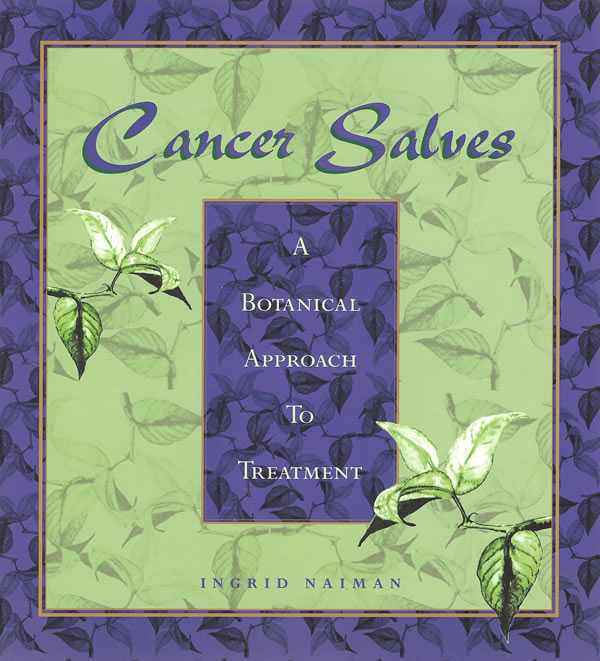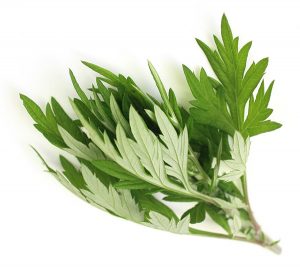“Not only does it appear to be effective, but it’s very selective,” Lai said. “It’s highly toxic to the cancer cells but has a marginal impact on normal breast cells.”
Wormwood is the Basis for a
Cancer-fighting Pill
Published Wednesday, November 28, 2001
Environmental News Network
Botanical Name: Artemisia annua
English: Sweet Annie
Chinese: Qinghao (青蒿)
Native Habitat: Temperate Asia
A
Two bioengineering research professors at the University of Washington have rediscovered wormwood as a promising potential treatment for cancer among the ancient arts of Chinese folk medicine.
“Not only does it appear to be effective, but it’s very selective,” Lai said. “It’s highly toxic to the cancer cells but has a marginal impact on normal breast cells.”
Research professor Henry Lai and assistant research professor Narendra Singh have exploited the chemical properties of a wormwood derivative to target breast cancer cells with surprisingly effective results. A study in the latest issue of the journal Life Sciences describes how the derivative killed virtually all human breast cancer cells exposed to it within 16 hours.
3 Environmental risk factors for cancer are many. Lifetime exposure to the female hormone estrogen and estrogen-mimicking chemicals such as some pesticides and herbicides has been linked to an increase in breast cancer risk. In 1991, the International Agency for Research on Cancer classified the pesticide DDT as a possible human carcinogen, and the U.S. Environmental Protection Agency (EPA) has classified DDT as a probable human carcinogen.
The manufacture of PCBs, the oily liquids or solids used as coolants and insulators, was stopped in the United States in 1977 because of concerns that exposure increases the risk of cancers, but PCBs are still found in the environment.
Most Americans are exposed every day to air toxins emitted by motor vehicles, substances that the EPA says have been proven to cause cancer in humans. “Benzene, says the EPA, “is a known human carcinogen, while formaldehyde; acetaldehyde; 1,3-butadiene; and diesel particulate matter are probable human carcinogens.” The EPA has now classified 1,3-butadiene, a gas used commercially in the production of resins and plastics, as a known human carcinogen.
The use of the bitter herb wormwood is nothing new. Used for centuries to rid the body of worms, it is also an ingredient in the alcoholic beverage absinthe, now banned in most countries.
Artemisinin, the compound that Lai and Singh have found to fight cancers, isn’t new either. It was extracted from the plant Artemisia annua L., commonly known as wormwood, thousands of years ago by the Chinese, who used it to combat the mosquito-borne disease malaria. The treatment with artemisinin was lost over time but rediscovered during an archaeological dig in the 1970s that unearthed recipes for ancient medical remedies.
Now widely used in Asia and Africa to fight malaria, artemisinin reacts with the high iron concentrations found in the malaria parasite. When artemisinin comes into contact with iron, a chemical reaction ensues, spawning charged atoms that chemists call free radicals. The free radicals attack cell membranes, breaking them apart and killing the single-cell parasite.
About seven years ago, Lai began to hypothesize that the process might work with cancer, too.
“Cancer cells need a lot of iron to replicate DNA when they divide,” Lai explained. “As a result, cancer cells have much higher iron concentrations than normal cells. When we began to understand how artemisinin worked, I started wondering if we could use that knowledge to target cancer cells.”
Lai devised a potential method and began to look for funding, obtaining a grant from the Breast Cancer Fund in San Francisco. Meanwhile, the UW patented his idea.
The thrust of the idea, according to Lai and Singh, was to pump up the cancer cells with maximum iron concentrations, then introduce artemisinin to selectively kill
In the current study, after eight hours, just 25 percent of the cancer cells remained. By the time 16 hours had passed, nearly all the cells were dead.
An earlier study involving leukemia cells yielded even more impressive results. The cancer cells were eliminated within eight hours. A possible explanation might be the level of iron in the leukemia cells. “They have one of the highest iron concentrations among cancer cells,” Lai explained. “Leukemia cells can have more than 1,000 times the concentration of iron that normal cells have.”
The next step, according to Lai, is animal testing. Limited tests have been done in that area. In an earlier study, a dog with bone cancer so severe it couldn’t walk made a complete recovery in five days after receiving the treatment. But more rigorous testing is needed.
“If the process lives up to its early promise, it could revolutionize the way some cancers are approached, Lai said. The goal would be a treatment that could be taken orally on an outpatient basis.
“That would be very easy, and this could make that possible,” Lai said. “The cost is another plus: At $2 a dose, it’s very cheap. And with the millions of people who have already taken artemisinin for malaria, we have a track record showing that it’s safe.”
Whatever happens, Lai said, a portion of the credit will have to go to unknown medical practitioners, long gone now. “The fascinating thing is that this was something the Chinese used thousands of years ago,” he said. “We simply found a different application.”
Copyright © 2001 Environmental News Network Inc.
Artemisinin Training Video Dr. Henry Lai
Artemisia annua (Sweet wormwood) – from sowing to harvest a life-saving plant
DIY Herbs – Sweet Annie
Artemisia annua – Cultivation methods of a plant with a great future
Many experts throughout history have regarded cancer salves and pastes as the most thorough, safe, and efficacious way to treat cancer, especially skin and breast cancers but also cancers of other organs. In this book, Ingrid Naiman meticulously traces the use of such products in ancient India and by Hildegard of Bingen, Native Americans, and modern physicians. She provides detailed instructions for making and using the salves, a fair comparison of the pros and cons, and eight pages of color pictures showing responses to the products. Visit her Cancer Salves site for more information, answers to frequently asked questions, and a checklist for people facing cancer.

Cancer Plants
Donations
Your donations are greatly appreciated.
Information
Newsletter
To be notified of new posts to this site, please subscribe, using the link button below. You can cancel your subscription at any time you choose.
Copyright by Dr. Ingrid Naiman 2003 and 2018
All Rights Reserved || Institute for Invisible Epidemics

